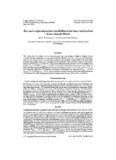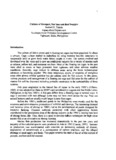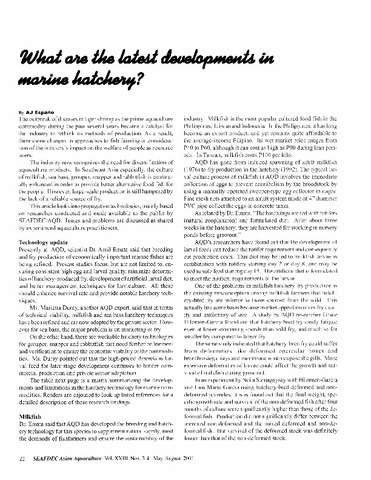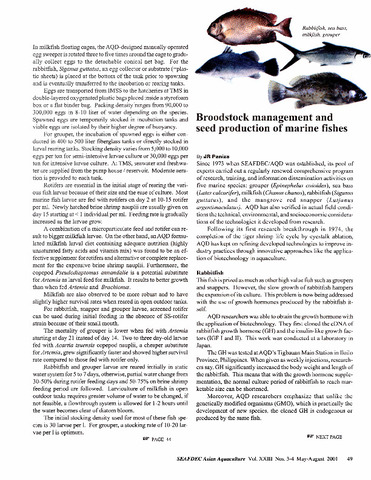Size- and weight-dependent cannibalism in hatchery-bred sea bass (Lates calcarifer Bloch)
Share
Abstract
The relationship of predator size to maximum prey size, and predator weight to weight of prey consumed among cannibalistic sea bass (Lates calcarifer Bloch) in a hatchery were assessed. Maximum prey size was computed from morphological measurements (predator mouth width, prey body depth and fish total length), while prey consumption was determined from predators kept in experimental beakers and fed only prey sea bass for a 7-day period. Maximum prey size was 61–67 % of predator total length \((TL_{prey} = 0.5944 TL_{predator} + 0.0724)\). Gut dissection of predators showed that size of ingested prey increased with increasing predator size not exceeding the maximum size limit indicated by the above equation. Daily prey consumption of predators in the beakers was expressed as \(W_{Prey} = -0.2407\; W_{predator^{2}}+ 0.7697W_{predator}-0.1141\). During hatchery rearing of sea bass, fish with length differences of more than 33 % must be separated and food of appropriate size provided to limit cannibalism.
Suggested Citation
Parazo, M. M., Avila, E. M., & Reyes, D. M., Jr. (1991). Size- and weight-dependent cannibalism in hatchery-bred sea bass (Lates calcarifer Bloch). Journal of Applied Ichthyology , 7(1), 1-7. https://doi.org/10.1111/j.1439-0426.1991.tb00588.x
Subject
Taxonomic term
Collections
- AQD Journal Articles [1249]
Related items
Showing items related by title, author, creator and subject.
-
Culture of grouper, sea bass and red snapper
Toledo, Joebert D. (University of the Philippines Aquaculture Society, Inc., 2001)Marine fish production has increased dramatically in the past ten years and majority of the cultured species were produced in Asia in 1992. Increase in production was accompanied with concerns on increasing outbreak of ... -
What are the latest developments in marine hatchery?
Españo, A. J. (Aquaculture Department, Southeast Asian Fisheries Development Center, 2001) -
Broodstock management and seed production of marine fishes
Paniza, J. R. (Aquaculture Department, Southeast Asian Fisheries Development Center, 2001)




